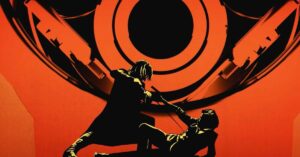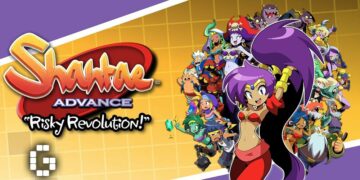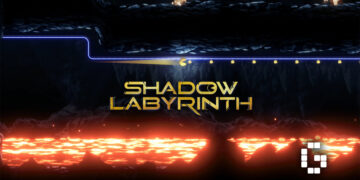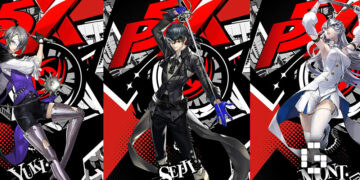Netflix has premiered its live-action adaptation of Cowboy Bebop, considered by many to be one of the best anime of all time.
The series was developed by Andre Nemec and stars John Cho, Mustafa Shakir, and Daniella Pineda as Spike Spiegel, Jet Black, and Faye Valentine. The three are bounty hunters looking for their next paycheck across the galaxy, all while confronting their pasts, particularly, Spike’s past involving the Red Dragon Syndicate and his relations with the assassin Vicious and his wife Julia, who was Spike’s old lover.
The series acts as a completely new and separate adaptation of the story, meaning that you don’t have to watch the original anime to understand it.
Anime adaptations have a notorious reputation for being bad and in some ways, Cowboy Bebop is a major step up. From the high budget and great cinematography, it is obvious that the creators care deeply for this property and how to adapt it faithfully. That being said the show still has a couple of questionable speed bumps along the road. It often feels restricted by some rather poor writing conventions of Western television writing that prevent it from truly reaching the stars.
The Visuals
The first thing that is notable about Cowboy Bebop (2021) is its stunning visual style. The show, for the most part, is incredibly faithful to the anime. The characters look like their anime counterparts and the sets have that same retro sci-fi run-down aesthetic the shows did. Even the spaceships look fairly high-budget and accurate to the original. They even recreated the iconic intro.
This even further extends to the cinematography. The show makes great use of very still shots with characters having few movements to create tension, it even includes the use of angled camerawork to create more dynamic shots. This mirrors the style of many anime, relying on more carefully placed dynamic shots with little motion.
Of course, when the action comes, anime burst in sakura-style action, and Bebop does the same with some well-choreographed action scenes combining that same mix of Western-style gunplay, eastern-style martial arts, and the occasional space dog fight that the original pulled off so well. They even managed to recreate some pretty well-known shots from the anime and pull them off nicely.

Finally, there’s the crown of the series, the music. They brought back Yoko Kanno to do the soundtrack and it is a jam! That sweet jazz fits the series just as well as it did the original, perfectly molded for every scene, especially the fight scenes. If you take anything away from the show, it’s how good the OST is.
Life on Mars

The biggest difference between the Netflix show and the anime is that while the anime is for the most part episodic, the Netflix show is slightly more serialized. The crew usually goes up against a new bad guy for the episode but with subplots regarding Vicious and The Syndicate continuing from the previous episodes.
For the most part, the episode-by-episode on-off plots were alright with the mix of action, sci-fi, and cheeky comedy you’d expect. I also really love the exchanges between the crew, especially Spike and Jet who bicker and banter at each other with well-placed dialogue. You can feel how the series wants to embrace its anime origins rather than downplaying them like most anime adaptations.
Bumps In The Attic
That being said, the plot doesn’t capture that same introspective character development that the original did. The anime essentially followed the crew just going through life occasionally encountering remnants of their past and showing how they reflect on them.
While still having fun action and dialogue, Cowboy Bebop Netflix definitely feels more constrained to conventional television drama including easier-to-understand motives and straightforward goals. Jet wants to take care of his daughter (because it’s not a Hollywood show if there is;t at least one character with a kid to take care of), Faye wants to find out about her past, and Spike wants to stop Vicious.
These were all there in the original but here, they’re brought more to the forefront in a far less subtle way making each character’s arc feel more telegraphed and less nuanced. For example, Faye’s mysterious backstory in the original of betrayal and alienation is depicted in a more lighthearted, almost comedic tone, complete with a blunt message about trusting others and the importance of family.
There is also a weird amount of adult humor in this show. Characters are constantly swearing and making sex jokes. I’m not a prude, but it feels jarringly out of place. For example in episode 2, there’s a part where the team needs to go to an S&M club and we see a dom whipping two gimps for a couple of minutes. It feels unnecessarily excessive, like a 14-year-old’s idea of how to make an ‘adult show’.
The Bebop Crew

The original Cowboy Bebop was a very character-driven show. The Netflix Cowboy Bebop however is a mixed bag, with some great portrayals and others that needed to be left in the fridge.
John Cho does a great job as our main man Spike Spiegel. He captures the cool-as-ice demeanor of Spike from his voice to his mannerisms. His interactions with the rest of the cast are also well done with much of the character’s sly wit shining through his dialogue. His martial arts and gunplay are also on point.
Mustafa Shakir likewise does well as the gruff responsible Jet Black with his voice sounding almost identical to Jet’s English dub voice actor Beau Billingslea. A big change with Jet here is that he has a daughter. The change doesn’t feel necessary. It feels like the studio just wanted a character with a family to make them more relatable. That being said it doesn’t affect Jet’s personality too much overall.
The problems start with Faye Valentine. This is not the actress’ fault. The way she is written simply doesn’t feel like Faye. Faye in the anime comes across as a femme fatale, sultry and sleek but underneath is a bit slobby and sarcastic which made her feel very human. Faye in the Netflix Cowboy Bebop is very… Aquafina. She’s this eccentric trash talker, who’s actually super into the bounty hunting stuff, and when I mentioned that there was a lot of swearing in the show, a lot of that comes from her. It feels like they wanted to make her more “badass” but her new characterization just came off as surface-level and annoying.
Finally, there’s the main villain Vicious and he’s also disappointing. In the anime, Viscious appears little but leaves an impact as a stone-cold killer. Here Vicous gets his own subplot exploring his backstory, and watching him plot to take over the Red Dragons. It basically reveals that this iconic villain was really a spoiled rich kid with daddy issues. More screen time means we also see his plans constantly undermined by Spike, Julia, and the elders, often leading to him screaming like a cartoon mobster. It’s a far cry from his anime counterpart and makes him look completely pathetic.
Final Jam

The Netflix Live-Action adaption of Cowboy Bebop is overall a pretty average sci-fi action show. It’s at its strongest when it takes on the more episodic format of the original but at its weakest when it returns to the overarching plot. Here, it simply does not capture to full depth and character development of the anime and some of its choices like the writing for Faye, Vicious, and annoying adult humor are questionable. It may be unfair to constantly compare the two but this is an adaptation. Comparisons are natural especially when the original anime is so beloved.
That being said I do think it’s a decent watch. It is clear that the creators care a great deal for the anime and it shows in the high budget, designs, and good soundtrack. If the original is a grand concert, the Netflix version is like a supporting act and there are worse things than playing support to Cowboy Bebop.
Join Us!
We are recruiting! If you want to break into the gaming media industry, don't miss out on the golden opportunity. Find out more: Malaysia. Overseas.Featured Video
The Review
Cowboy Bebop (2021)
PROS
- Sets and Costumes are accurate and good quality
- John Cho and Mustafa Shakir are great as Spike and Jet
- The soundtrack by Yoko Kanno is fantastic
CONS
- Writing lacks the depth of the original
- Faye and Vicious aren't written well
- Too Many Forced Adult Jokes









![[EXCLUSIVE] Creative Masterminds from Gearbox Software Reveal What Makes Borderlands 4 Worth the Wait](https://cdn.gamerbraves.com/2025/07/Borderlands-4-at-Bilibili-World-2025_Interview_FI-360x180.jpg)




![[ASIA EXCLUSIVE] Bringing Back a Classic: Inside the Making of FINAL FANTASY TACTICS – The Ivalice Chronicles](https://cdn.gamerbraves.com/2025/06/FFT-Ivalice-Chronicles_Interview_FI2-360x180.jpg)






![[ Guide ] Arknights: Recommended 5-star Operators](https://cdn.gamerbraves.com/2021/11/arknights-bunny-bois-75x75.jpg)






